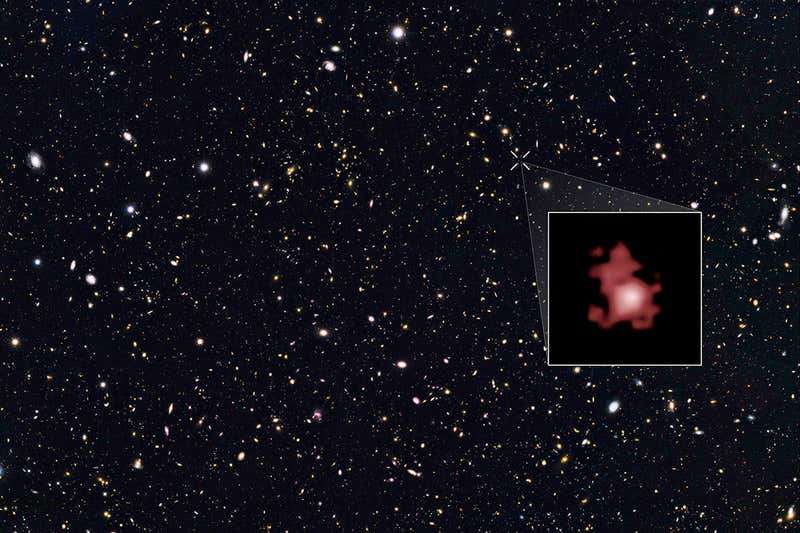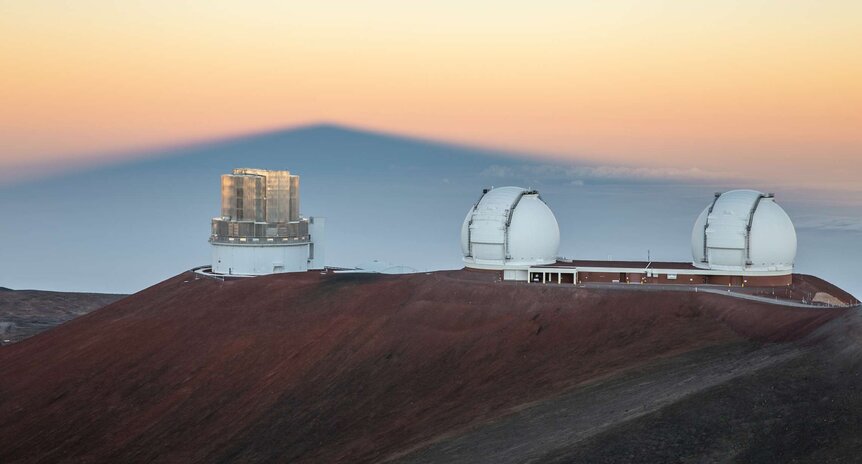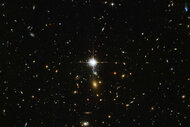Create a free profile to get unlimited access to exclusive videos, sweepstakes, and more!
It's official! Astronomers confirm GN-z11 is the most distant galaxy ever seen

Back in March of 2016, NASA/ESA's Hubble Space Telescope spotted the most distant heavenly object ever seen in the great universal void: an extremely remote galaxy silently spinning beyond the constellation Ursa Major, some 13.4 billion light-years away.
Officially catalogued as GN-z11, this ancient galactic rarity was captured in the same form as when it existed nearly 420 million years following the Big Bang, making it one of the first galaxies formed after that cataclysmic event.
Now a new study presented by astronomers at the University of Tokyo and Peking University has accurately measured the redshift of GN-z11. In a new paper published in Nature Astronomy, researchers confirmed that this far-off galaxy is indeed the furthest observable object witnessed by mankind.
“From previous studies, GN-z11 seems to be the farthest detectable galaxy from us, at 13.4 billion light years,” explained co-lead author Dr. Nobunari Kashikawa, Department of Astronomy at the University of Tokyo. “But measuring and verifying such a distance is not an easy task.”
A key tool for astrophysicists, redshift is a shift toward longer wavelengths in spectral lines emitted by distant galaxies and celestial objects. It's the result of the universe expanding, and subsequently the object moving away from the Earth.
According to the research paper, the team targeted chemical signatures known as emission lines — which imprint unique patterns in the light streaming in from distant objects — for their calculations.
“By measuring how stretched these telltale signatures are, we can deduce how far the light must have traveled, thus giving away the distance from the target galaxy," Kashikawa added. “We looked at ultraviolet light specifically, as that is the area of the electromagnetic spectrum we expected to find the redshifted chemical signatures."
While the original data collected by Hubble recorded the signature numerous times in the spectrum of GN-z11, scientists still required more precise details of these ultraviolet emission lines to lock in the record-breaking find.
By employing near-infrared spectroscopic observations using the MOSFIRE spectrograph installed on the Keck I telescope at the W.M. Keck Observatory in Hawaii, Kashikawa and his colleagues discovered that GN-z11's redshift was officially determined to be z = 10.957.
“MOSFIRE captured the emission lines from GN-z11 in detail, which allowed us to make a much better estimation on its distance than was possible from previous data,” Kashikawa and his crew noted.
In addtional news generated from this remote galaxy, a team led by Linhua Jiang of Peking University in Beijing, China was recently using the Keck Observatory in Hawaii to study GN-z11. They observed a massive explosion emanating from the faint celestial location. The galaxy appeared hundred of times brighter for just under 3 minutes, and was likely caused by an intense gamma-ray burst when one of its stars exploded in a brilliant supernova.
If verified, this would go down as the oldest gamma-ray burst ever spotted, something not normally observed in galaxies born in the fledgling universe.
"This is because gamma-ray bursts should be extremely rare," said Jiang. “The probability to detect a gamma-ray burst [in a particular galaxy] is near to zero,” he says. “If you observed a galaxy for a million years, you’d probably find [only] a few gamma-ray bursts. That’s why it’s so surprising.”















